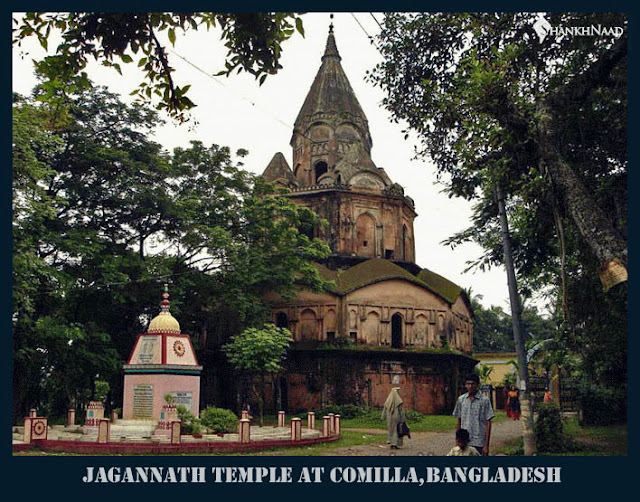In the Comilla district of Bangladesh is an ancient temple of Lord Jagannath.
Comilla Jagannath Temple, also known as Saptaratna ('seven jewels') Mandir, is dedicated to the worship of Lord Jagannath. The temple was built in the 16th Century by Sree Sreejoktou Moharaja Rada Kishor Manikuo Bahadur, the King of Tripura. This is one of the oldest temples in Comilla, which is located in eastern Bangladesh along the Dhaka-Chittagong Highway. Comilla is one of the three oldest cities in Bangladesh. The temple complex resides on the southeast sides of Comilla City (also known as Kandirpar) at Jagannathpur village, five kilometers east of the city on the Comilla-Bibir Bazar Road.
The exact time of construction is not known, but the temple is generally dated by its terracotta architecture. At the time of King Badhadur's reign, Comilla was known as Tippera (or Tripura).
The princely State of Tripura, including all of the Comilla region, was ruled by the Deva dynasty in the 8th Century, then came under the reign of the kings of the Harikela in the 9th Century. It came under the rule of East India Company in 1765.
Tripura, an ancient seat of Vaisnavism, was bordered by Bangladesh to the north, south, and west, with Assam and Mizoram to its east. Tripura is mentioned in many Vedic texts, including the Mahabharata and Puranas. It's also mentioned in the Edicts of Ashoka, stone pillar inscriptions from the 3rd Century B.C. In ancient times, Tripura was known as Kirat Desh ("The land of Kirat").
There seems to be little information available about the Deities of this temple, except that Lord Jagannath, Balabhadra and Subhadra were originally installed in another temple located in 'hilly Tripura'. Once the new temple construction was completed, Their Lordships were moved and installed at Their new Comilla abode.
The architecture of Lord Jagannatha's Temple at Comilla is striking and beautiful, as seen in the circa 1843 sketch above, and current photographs. The temple is approx. 60 feet tall, being a four-storied conical shape built of brick on an octagonal base-stone. This is said to be the only octagonal shaped temple of its time in Bangladesh.
The temple is ornamented with various terracotta designs like flowers, leaves, etc. The Department of Archaeology renovated portions of the outer ground and first floors, and apparently some of the terracotta did not survive the process.

No comments:
Post a Comment